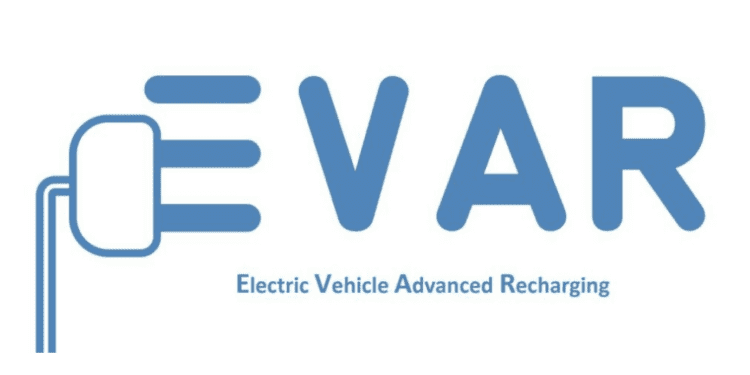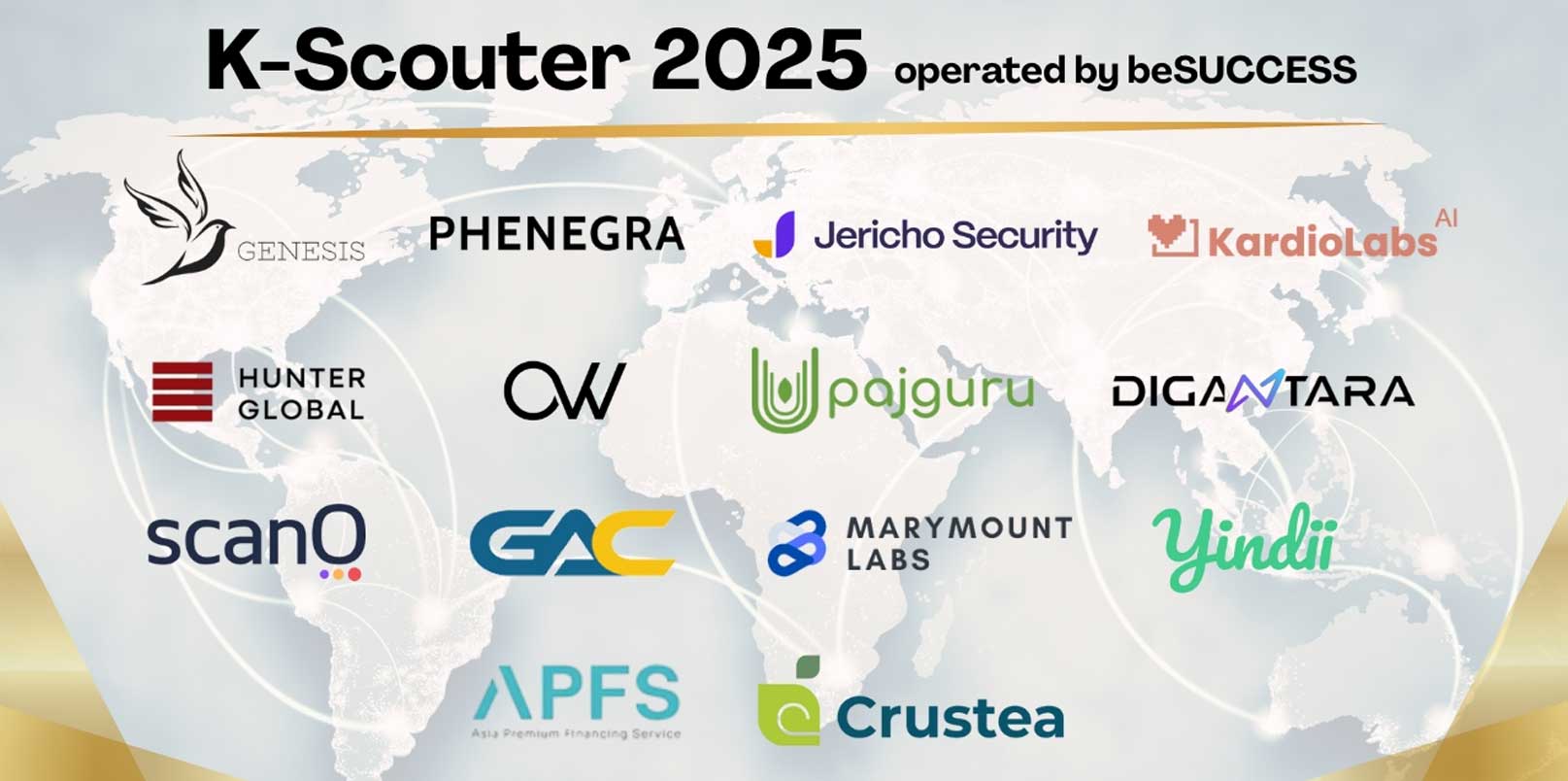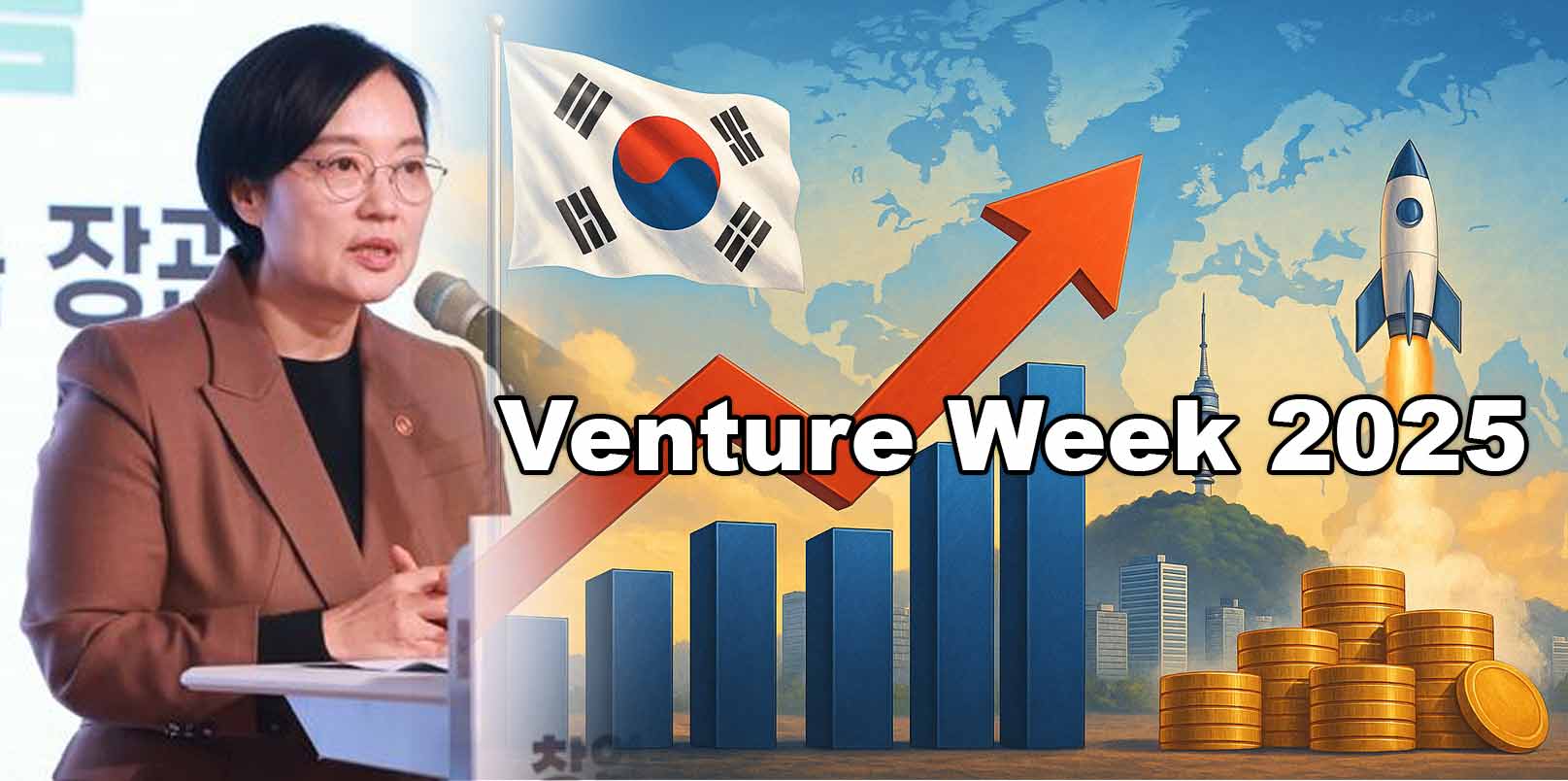According to the German consulting firm Roland Berger, the global electric vehicle (EV) charging market is expected to reach a staggering $55 billion (approximately 76 trillion KRW) in 2023. Looking ahead to 2030, the market is projected to grow nearly sixfold to $325 billion (450 trillion KRW). As the market expands, major corporations are increasingly entering the competitive landscape of electric vehicle charging. In this highly competitive market, there is a small but strong startup making waves – EVAR, a CAPA customer, is the world’s first to develop an autonomous charging robot for electric vehicles.
EVAR began with the real-life experience of its CEO, Lee Hoon. In 2016, Lee reserved an electric car. The joy of owning a new car, especially an electric one, was short-lived as concerns quickly arose. This was due to the limited availability of electric vehicle charging stations near his home, particularly in apartment complexes. Installing charging stations in the parking lots of apartments required the consent of residents, and many were opposed to the idea, citing the already limited parking space. It was during this time that the idea of a “supporting battery” came to Lee’s mind.
“Wouldn’t electric vehicles be able to be charged with auxiliary batteries like smartphones? Wouldn’t it be much more convenient if the auxiliary battery moves and charges autonomously?”
This idea became the starting point for EVAR, initiated during the time when CEO Lee was working at Samsung Electronics’ in-house venture program, ‘C-Lab Inside.’ Established as an official corporation in 2018, EVAR, in 2022, received invitations to the world’s largest IT exhibition, CES, where it won two innovation awards and subsequently in CES 2023 as well. Within just four years of its founding, EVAR has gained international recognition for its technological prowess, making it a proud customer of CAPA. Let’s delve into the success story of EVAR.
Transitioning from a Samsung Electronics in-house venture, C-Lab Inside, to an independent startup, EVAR, CEO Lee Hoon, a planner with a background in electronic engineering, teamed up with Director Shin Dong-hyuk, who excelled in planning, sales, and marketing, and Vice President Kim Ki-jae, skilled in both software and hardware development. Together, they addressed the pain point that CEO Lee had identified—a solution involving a self-driving charging robot equipped with an Energy Storage System (ESS) that autonomously locates and charges electric vehicles with low batteries.
Based on this concept, they successfully spun off in October 2018, established a corporation in November of the same year, and ambitiously took the first steps toward commercializing their product. However, their progress in the business, which they thought would unfold swiftly, encountered a roadblock: unexpected regulatory risks.
Overcoming unexpected legal risks by preparing alternatives
To provide charging services in parking lots, they realized they needed insurance coverage in case of potential contact accidents. However, with no legal standards related to autonomous driving, there were no insurance products available. Stuck in a situation where the absence of regulations, rather than the technology, hindered their business, they couldn’t simply wait for legal standards to be established. Consequently, they devised a pragmatic alternative—developing the ‘Mobile EV Charger,’ a cart that people manually move to use at charging stations.
‘Mobile charging cart’ that can be easily pulled with little force
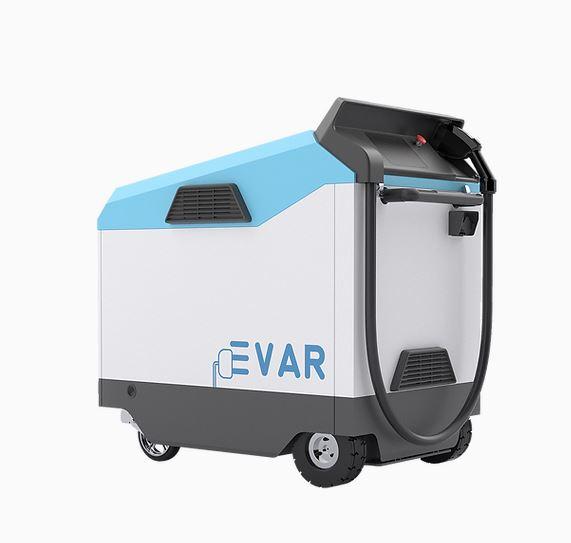
The Mobile EV Charger is incredibly easy to use. Users simply pull the charging cart to their electric vehicle, attach it to the dedicated adapter, and start charging – it’s that simple! The cart utilizes an internal battery for the charging process. Despite the cart’s weight exceeding 700kg, it features ‘muscle enhancement technology,’ allowing anyone to move the cart effortlessly with just a little force. Additionally, equipped with ultrasonic sensors and LiDAR (Light Detection and Ranging), it can easily detect obstacles in its path, ensuring safety.”
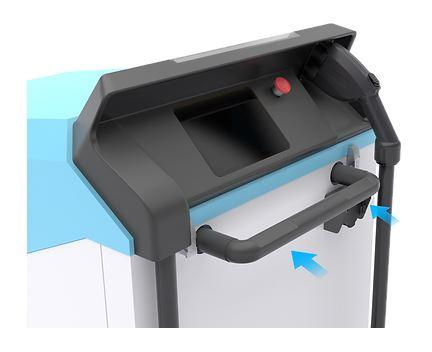
Above all, the Mobile EV Charger’s greatest advantage is undoubtedly its spatial efficiency. It eliminates the need to create separate parking spaces for electric vehicles. With a full charge of the charging cart, it can typically charge an electric vehicle twice. This makes it suitable for apartments or locations facing power shortages.
‘Power-Sharing Smart EV Charger’ for Apartment Parking
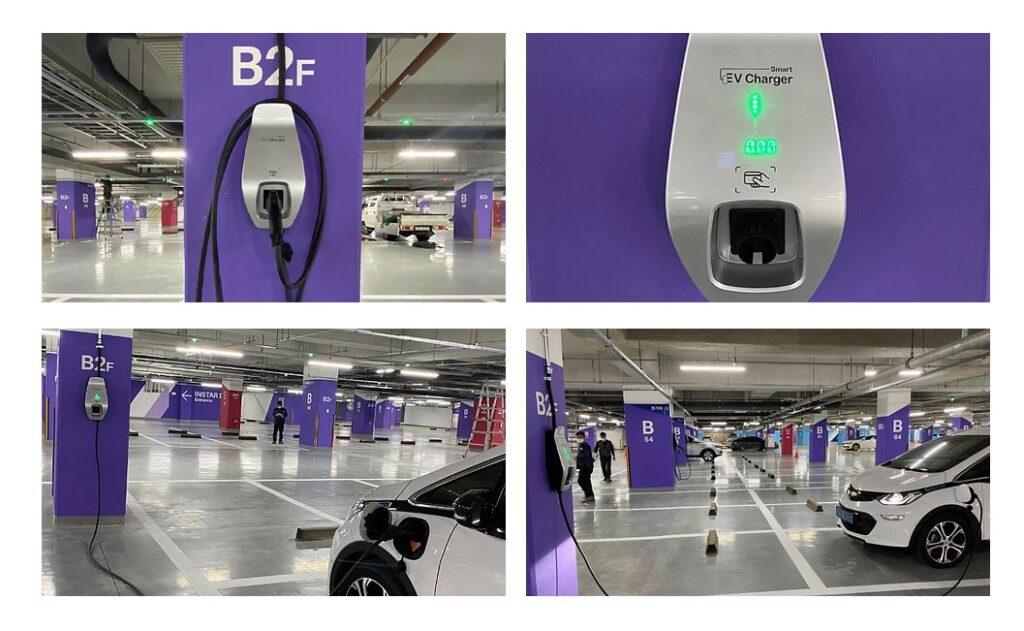
To address the substantial power consumption of electric chargers, especially in apartment parking lots where increasing power capacity may not be feasible, EVAR has developed a ‘Power-Sharing Smart EV Charger.’ This innovative charging solution allows efficient utilization of limited electricity by enabling chargers to share power among themselves. The Power-Sharing Smart EV Charger is a user-friendly wall-mounted charger with a convenient charging system using NFC tags or QR codes. Its Bluetooth functionality ensures safe and efficient charging.
Parky – The Autonomous Charging Robot
Staying true to its original mission of developing a ‘self-driving charging robot,’ EVAR, despite immediate regulatory challenges, remained committed to creating the world’s first self-driving charging robot. Named ‘Parky,’ this autonomous charging robot underwent continuous technological and performance upgrades. As a result, EVAR received three innovation awards in two categories, Parky and VMC, at CES 2023, the world’s largest consumer electronics and technology trade show. This recognition marks EVAR as the first electric vehicle charging station manufacturer to shine with five CES Innovation Awards for two consecutive years.
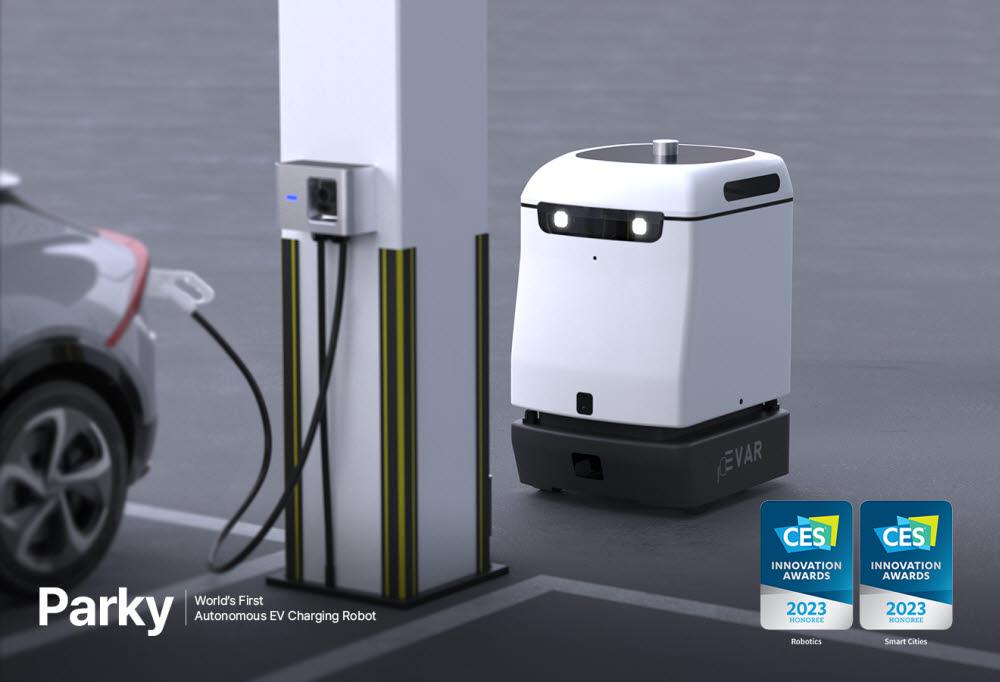
Parky, the award-winning autonomous robot in the Smart City and Robotics categories, is the world’s first self-driving robot that charges electric vehicles. Equipped with a high-capacity battery, Parky can autonomously navigate within a 3 km radius, detecting potential obstacles at a safe speed within parking lots.
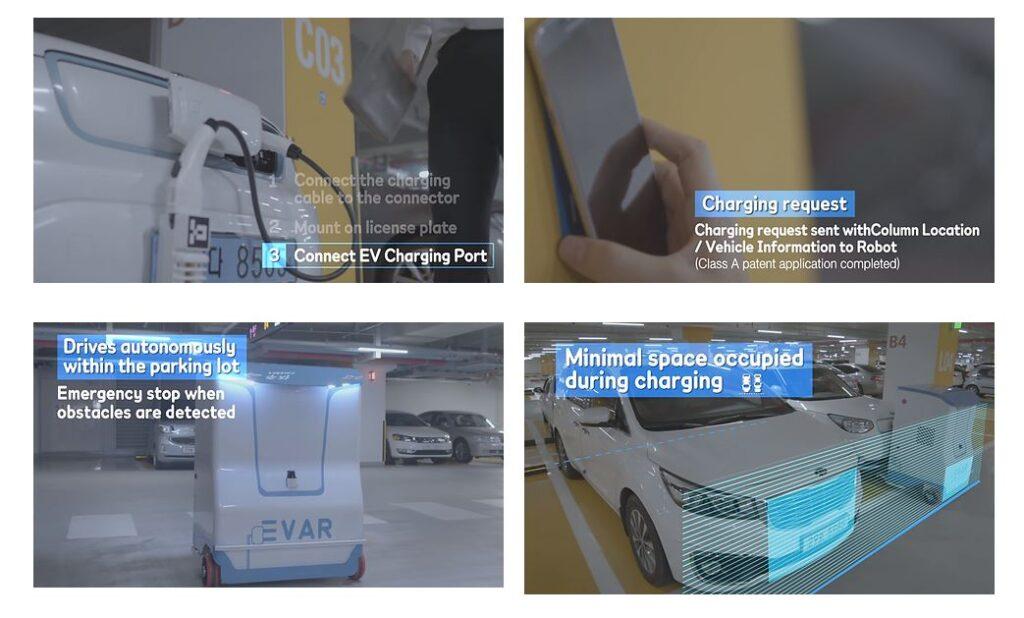
The usage is simple – after parking, the driver scans the QR code on the pillar, attaches the charging connector and cable, and Parky, having recognized the QR code information, moves to the front of the driver’s vehicle to initiate charging. Once charging is complete, Parky returns to its original position to recharge its battery.

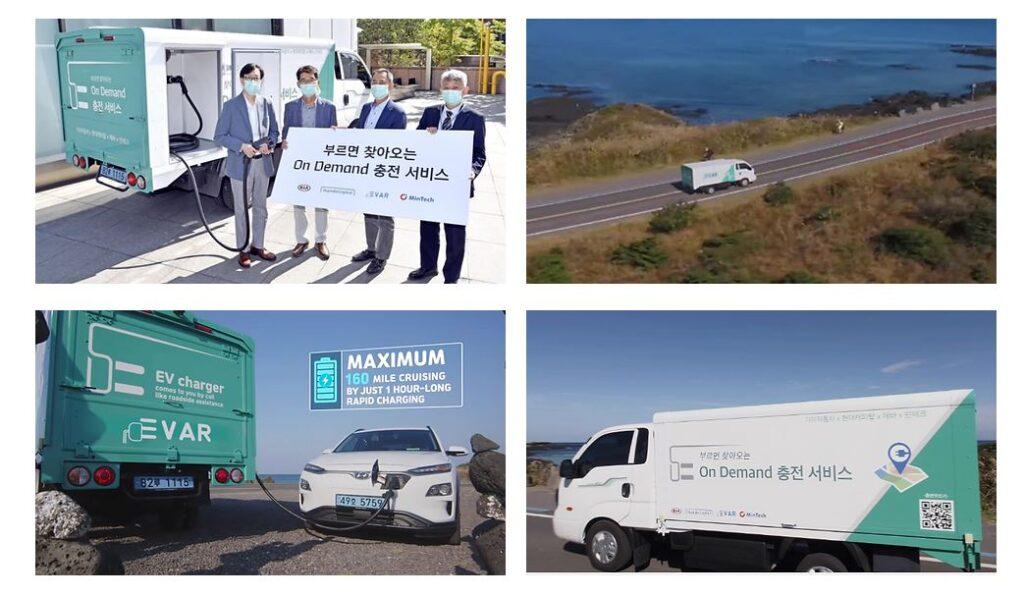
At ‘CES 2023,’ EVAR, in addition to Parky, also secured an innovation award in the ‘Smart City’ category for its VMC service. VMC (Van Mounted Charger) is a service where a vehicle equipped with a battery travels to the location of a summoned customer for charging. Customers can make reservations through the app, and the service vehicle arrives without time or location restrictions.
Overseas Expansion & Export to Canada
Following CES recognition, EVAR is attracting international attention and has plans to export mobile electric vehicle chargers to Canada and other countries. Even in Japan, where the electric vehicle market is not yet highly active, and in Southeast Asia, inquiries are being received.
Particularly, there is a high possibility that contracts for the autonomous charging robot Parky will be made in overseas markets. This is because resolving regulations related to autonomous driving is expected to happen earlier abroad than domestically. With the recognition from ‘CES 2023,’ it is anticipated that there will be an increased influx of inquiries and opportunities from overseas.
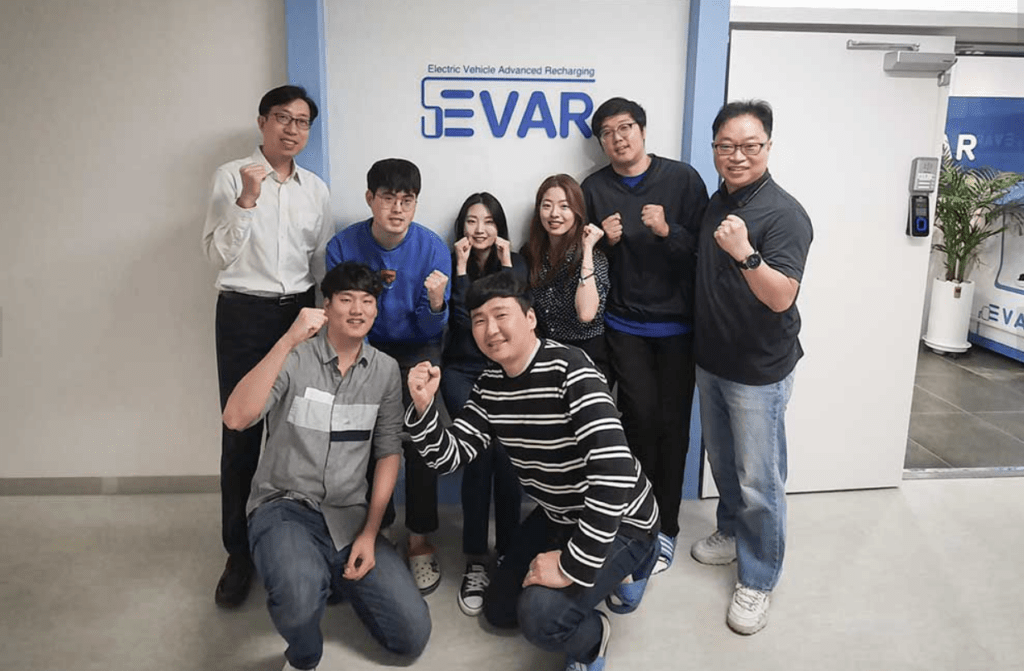
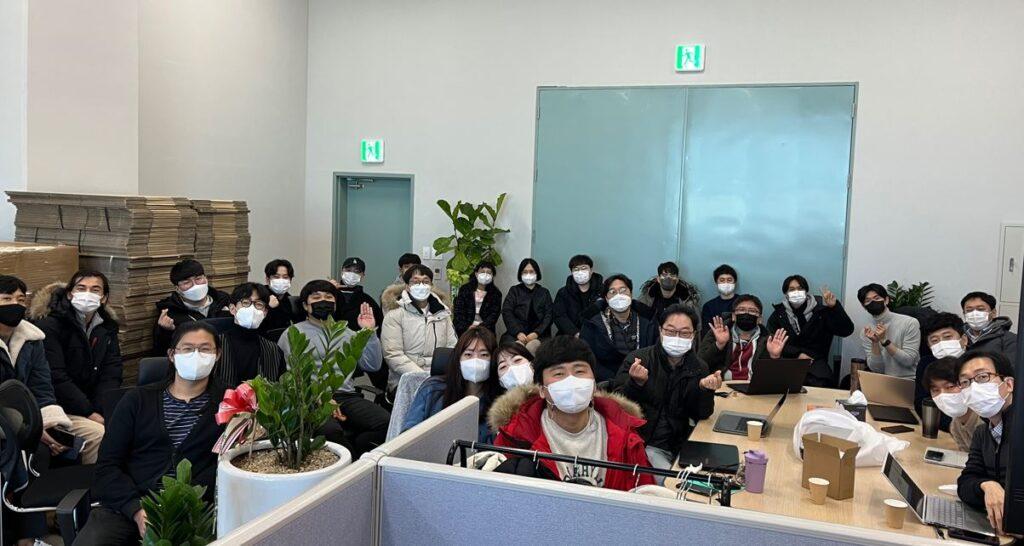
The following is an interview with Mr. Kim Ki-jae, Vice President of EVA, conducted at the EVAR headquarters in Pangyo, Gyeonggi Province.
1. What does the name ‘EVAR’ mean?
EVAR was the team name from the C-Lab, a Samsung Electronics internal venture. It stands for ‘Electric Vehicle Autonomous Recharging.’ In practice, we used the team name as the product name. However, since it seemed to be focused only on autonomous driving, we changed the meaning of ‘A,’ representing ‘Autonomous,’ to ‘Advanced’ to align with our company motto, ‘Worry-Free Electric Vehicle Life.’
2. How are the roles of the three co-founders distinguished?
During our time working together at the Samsung Electronics internal venture, Mr. Lee Hoon, the CEO, led the team, mainly handling planning. Mr. Shin Dong-hyuk, the CSO, was responsible for software, and I, Mr. Kim Ki-jae, the CTO, focused on hardware. Currently, Mr. Lee is the CEO, Mr. Shin is the CSO (Chief Strategy Officer), and I am the CTO (Chief Technology Officer).”
3. Could you provide a brief description of the autonomous charging robot, Parky?
Parky is the world’s first autonomous driving robot that charges electric vehicles. It is equipped with a high-capacity battery and can autonomously move within the parking lot to reach the vehicle’s location. It moves at a safe speed within a 3 km/h radius and can detect potential obstacles. It offers complete freedom to users as it can move to any location where the driver has parked. The ability of Parky to recognize the location of the user’s vehicle and move anywhere is a notable feature.”
4. Is the business primarily focused on B2B?
At present, we are concentrating on B2B, providing turn-key solutions, including charging products, control systems, and customer apps, to companies interested in entering the charging business.
5. What is the situation regarding international expansion?
We are currently undergoing relevant certifications in North America. In markets like Japan, where the electric vehicle market is still in its early stages, EVAR’s comprehensive solution seems to be a good fit. We have also started receiving inquiries from Southeast Asia, and we are considering this market as well. For VMC (Van Mounted Charger), a service that calls a vehicle equipped with batteries to charge, it is gaining attention, especially in the insurance sector. In Canada, we plan to launch a service where we go directly to provide charging services from December.
6. Is participating in CES part of the strategy for international expansion?
Yes, that’s correct. By receiving innovation awards at CES, customers recognize the technological capabilities of our products, and it seems that they are more interested in looking at them overseas.
Also Read,
- EVAR Secures $ 16 million in Series B Investment for EV Charging Solution, Attracts Foreign Backing
- UMTR Teams up with CAPA to Pioneer Localization of Biomembranes & Shape the Future of the Bio-Industry
- ZEEZIK Addresses LP Infrastructure Gap with Partnership with CAPA and Attracts MZ Generation
- Building Trust through Communication: Success Story of 3D Printing Partner ‘iContact’ on CAPA Platform
- Fuelling the Future: Young Korean innovators propel Rocket manufacturing with online support from CAPA
Keep tab on latest news in the Korean startup ecosystem & follow us on LinkedIN, Facebook, and Twitter for more exciting updates and insights.


